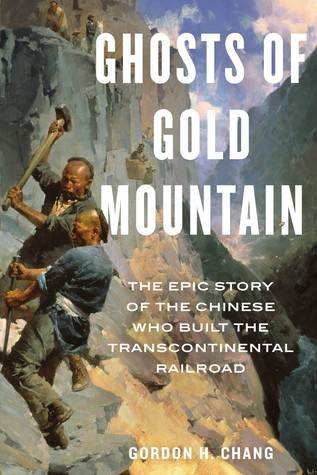
Ghosts of Gold Mountain
The Epic Story of the Chinese Who Built the Transcontinental Railroad
کتاب های مرتبط
- اطلاعات
- نقد و بررسی
- دیدگاه کاربران
نقد و بررسی

December 1, 2018
Award-winning Stanford historian Chang, also director of the university's Center for East Asian Studies, chronicles the fate of the thousands of Chinese workers who built America's railroads with their suffering and were then tossed aside.
Copyright 2018 Library Journal, LLC Used with permission.

March 18, 2019
In this ambitious saga, Chang (Fateful Ties), a professor of American history, burrows deep into the margins of history, attempting to reveal the experiences of the Chinese men who labored on the Central Pacific Railroad. He follows them from China’s Pearl River Delta to California, through the treacherous Sierra Nevada Mountains and into Nevada and Utah, pausing to examine the workers’ strike of 1867, brothels, violence against the Chinese, and other aspects of their lives. A lack of primary sources detailing the lives of the men who built one half of the transcontinental railroad—not a single diary and only a few letters—means Chang is forced to rely on payroll documents, inventory lists, folk songs, and other such sources to piece together his story. His writing is vibrant and passionate; he has searched as widely as he can to try to render his subjects as “vital, living, and feeling human beings who made history,”
and this account clarifies that the Chinese railroad workers had far more agency than popularly believed. But the sparseness of the historical record means that he has to spend far too long on extrapolation. Readers hoping for a well-sourced account of what it was like to work on the railroads won’t find one here, though Chang’s history does shed more light on this facet of American history. Agent: Melissa Chinchillo, Fletcher and Company.

April 1, 2019
A well-researched history of the "Railroad Chinese," those who traveled to the United States to build the transcontinental railway system but were thereafter mostly forgotten. As Chang (History/Stanford Univ.; Fateful Ties: A History of America's Preoccupation with China, 2015) notes, the lives and fates of the Chinese railroad workers who labored to build steel lines across mountains and deserts are not well-documented; much is an argument from silence, barring the discovery of "that elusive prize, the diary of a Railroad Chinese." What is certain is that many thousands arrived, traveling freelance or having been recruited from villages and cities in China. Drawing on family memories, government records, archaeological reports, and other materials, Chang reconstructs their difficult work and the social organization that underlay it, with young workers led by somewhat older foremen and labor brokers. Some arrived during the various gold rushes of 19th-century California, where they "frequently worked in teams on claims abandoned by white miners" and learned skills that would prove essential in later railroad work. Praised as "very good working hands," they were also subject to racism at every level of American society and were often the victims of violence--e.g., the case of "a Chinaman," as the court record calls a man named Ling Sing, who was repeatedly shot by a white man who escaped punishment thanks to laws that forbade nonwhites from testifying against whites. "Where Ling Sing is buried is not known," writes the author. The identities and pasts of so many others who died in construction accidents are similarly unknown, and although Railroad Chinese participated in strikes and asserted their rights, most disappeared after the lines were built, some to return to China, others to find work as farmers and laborers in places like New Orleans and California's Central Valley. A valuable contribution to the history of the Chinese in North America, allowing the formerly nameless to emerge "as real historical actors."
COPYRIGHT(2019) Kirkus Reviews, ALL RIGHTS RESERVED.

























دیدگاه کاربران